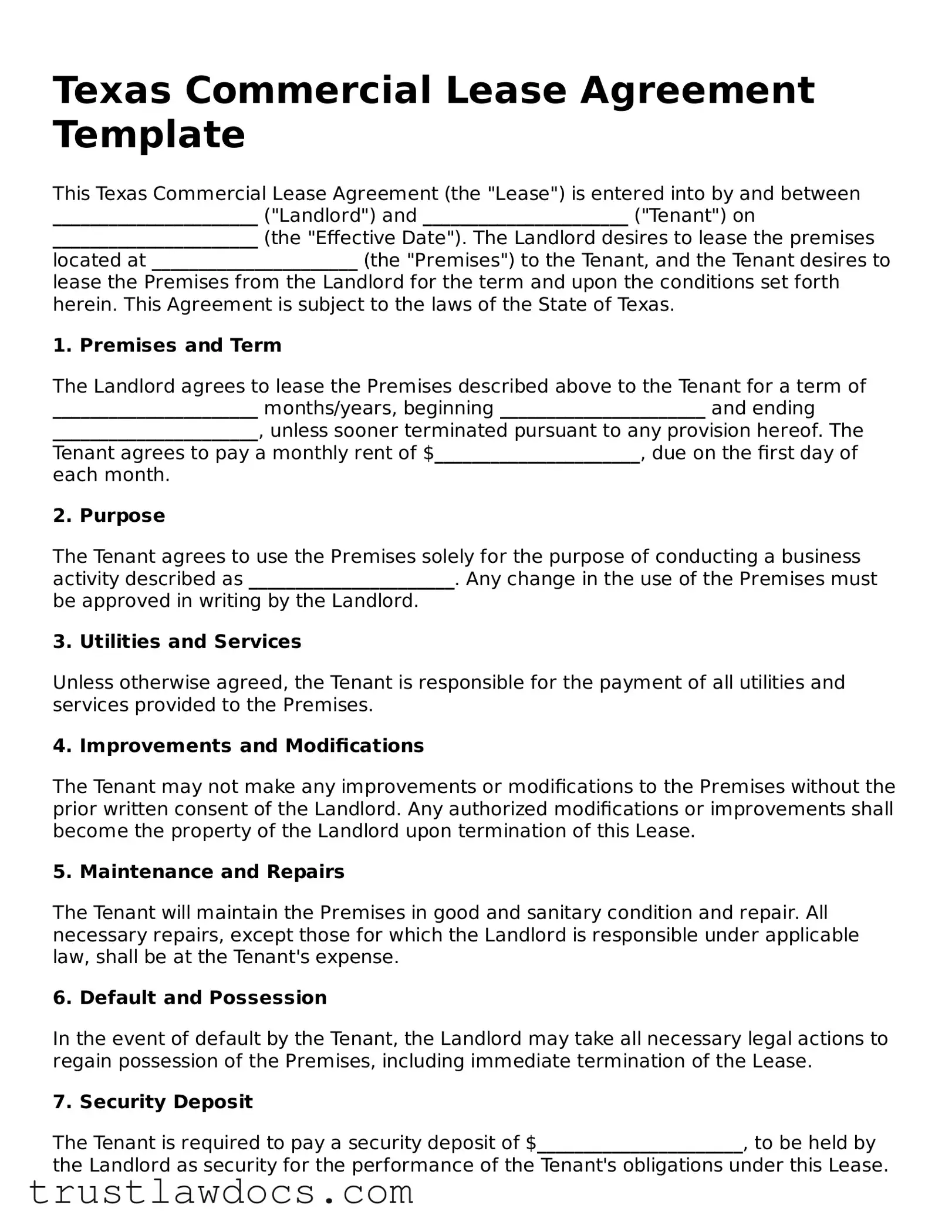Texas Commercial Lease Agreement Template
This Texas Commercial Lease Agreement (the "Lease") is entered into by and between ______________________ ("Landlord") and ______________________ ("Tenant") on ______________________ (the "Effective Date"). The Landlord desires to lease the premises located at ______________________ (the "Premises") to the Tenant, and the Tenant desires to lease the Premises from the Landlord for the term and upon the conditions set forth herein. This Agreement is subject to the laws of the State of Texas.
1. Premises and Term
The Landlord agrees to lease the Premises described above to the Tenant for a term of ______________________ months/years, beginning ______________________ and ending ______________________, unless sooner terminated pursuant to any provision hereof. The Tenant agrees to pay a monthly rent of $______________________, due on the first day of each month.
2. Purpose
The Tenant agrees to use the Premises solely for the purpose of conducting a business activity described as ______________________. Any change in the use of the Premises must be approved in writing by the Landlord.
3. Utilities and Services
Unless otherwise agreed, the Tenant is responsible for the payment of all utilities and services provided to the Premises.
4. Improvements and Modifications
The Tenant may not make any improvements or modifications to the Premises without the prior written consent of the Landlord. Any authorized modifications or improvements shall become the property of the Landlord upon termination of this Lease.
5. Maintenance and Repairs
The Tenant will maintain the Premises in good and sanitary condition and repair. All necessary repairs, except those for which the Landlord is responsible under applicable law, shall be at the Tenant's expense.
6. Default and Possession
In the event of default by the Tenant, the Landlord may take all necessary legal actions to regain possession of the Premises, including immediate termination of the Lease.
7. Security Deposit
The Tenant is required to pay a security deposit of $______________________, to be held by the Landlord as security for the performance of the Tenant's obligations under this Lease. The security deposit will be returned to the Tenant, without interest, after the Lease term ends and provided all Lease conditions are met.
8. Governing Law
This Lease shall be governed by and construed in accordance with the laws of the State of Texas.
9. Entire Agreement
This Lease constitutes the entire agreement between the Landlord and the Tenant regarding the subject matter hereof and supersedes all prior understandings, representations, negotiations, and correspondence between the two parties. No amendment or modification of this Lease shall be effective unless it is in writing and signed by both parties.
IN WITNESS WHEREOF, the parties have caused this Lease to be executed as of the Effective Date first above written.
Landlord: ________________________________________
Tenant: __________________________________________
